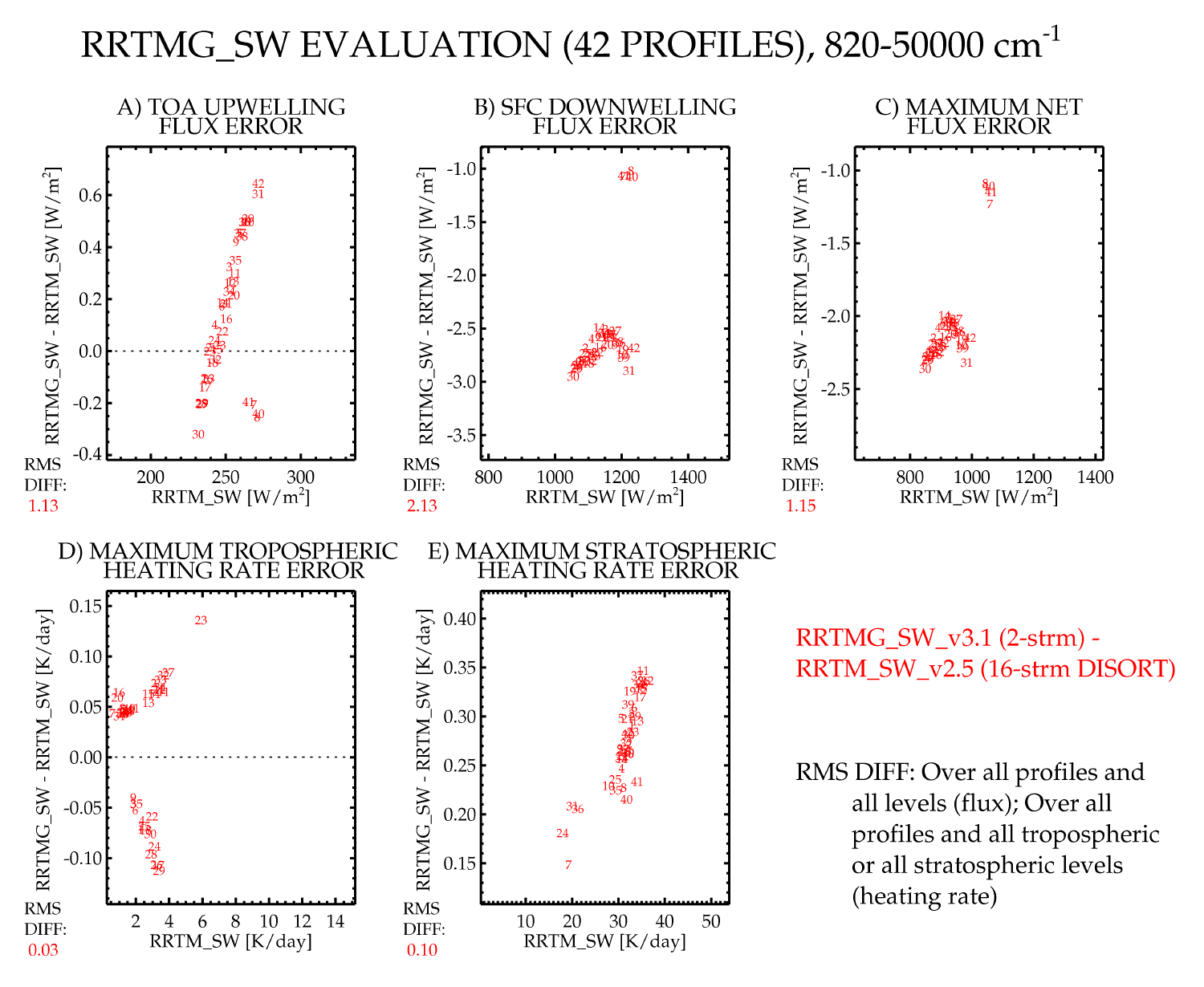-
Notifications
You must be signed in to change notification settings - Fork 14
Home
Rick Pernak edited this page Mar 17, 2020
·
12 revisions
RRTMG_\SW is a radiative transfer model that utilizes the correlated-k approach to calculate shortwave fluxes and heating rates efficiently and accurately for application to GCMs.
Key features of RRTMG_SW are:
- Absorption coefficient data for the k-distributions are obtained directly from the line-by-line radiative transfer model, LBLRTM, which has been extensively validated against observations, principally at the ARM SGP site. Data are consistent with those used in RRTM_SW_v2.5, which is described on its own RTWeb page, and the differences between RRTMG and RRTM have their own Wiki page.
- Fluxes and heating rates can be calculated over fourteen contiguous bands in the shortwave (820-50000 cm-1, or 0.2-12.20 microns). The individual band ranges (in wavenumbers, cm-1) are: 2600-3250, 3250-4000, 4000-4650, 4650-5150, 5150-6150, 6150-7700, 7700-8050, 8050-12850, 12850-16000, 16000-22650, 22650-29000, 29000-38000, 38000-50000, and 820-2600. The last band is coded out of sequence to preserve spectral continuity with the longwave bands.
- Modeled sources of extinction are water vapor, carbon dioxide, ozone, methane, oxygen, nitrogen, aerosols, and Rayleigh scattering
- A two-stream algorithm is used to perform scattering calculations; Reference: Oreopoulos and Barker (1999).
- Uses reduced set of g-intervals (112) for integration over extinction in each band relative to full set of g-intervals used in RRTM_SW (224).
- Includes McICA (Monte-Carlo Independant Column Approximation) capability to represent sub-grid cloud variability with random, maximum-random and maximum options for cloud overlap; References: Barker et al. (2003), Pincus et al., JGR, (2003).
- Coding has been reformatted to use many
FORTRAN90features. - Model able to run either as a column model or as a callable subroutine.
- Clear sky agreement with RRTM_SW is generally within 3 W m-2 for flux and for heating rate within 0.1 K day-1 in the troposphere and 0.3 K day-1 in the stratosphere
- Water clouds:
- The optical properties of water clouds are calculated for each spectral band from the Hu and Stamnes parameterization. The optical depth, single-scattering albedo, and asymmetry parameter are parameterized as a function of cloud equivalent radius and liquid water path.
- Reference: Hu, Y. X., and K. Stamnes, An accurate parameterization of the radiative properties of water clouds suitable for use in climate models. J. Climate, Vol. 6, 728-742, 1993.
- Ice clouds:
- The optical properties of ice clouds are calculated for each spectral band from the Fu parameterization, which assumes the ice crystals are hexagonal and randomly-oriented in space. The optical depth, single-scattering albedo, and asymmetry parameter are parameterized as a function of the generalized effective size of the ice crystals and the ice water content. (It is important to note that the generalized effective size is not equivalent to the effective mean size.)
- Reference: Fu, Q., An accurate parameterization of the solar radiative properties of cirrus clouds for climate models. J. Climate, 9, 2058-2082, 1996.
- Absorption coefficients and other initialization data can be optionally input through a netCDF data file. This feature was developed and provided by Patrick Hofmann and Robert Pincus of NOAA.
- Several options for treating solar variability are available based on the NRLSSI2 solar model, which allows the use of a fixed solar constant, a time-varying total solar irradiance based on the mean solar cycle, or a varying total solar irradiance defined by specific time-varying input indices for facular brightening and sunspot dimming. The constant total solar irradiance based on the Kurucz model in all versions of RRTMG_SW prior to v4.0 also remains available.
